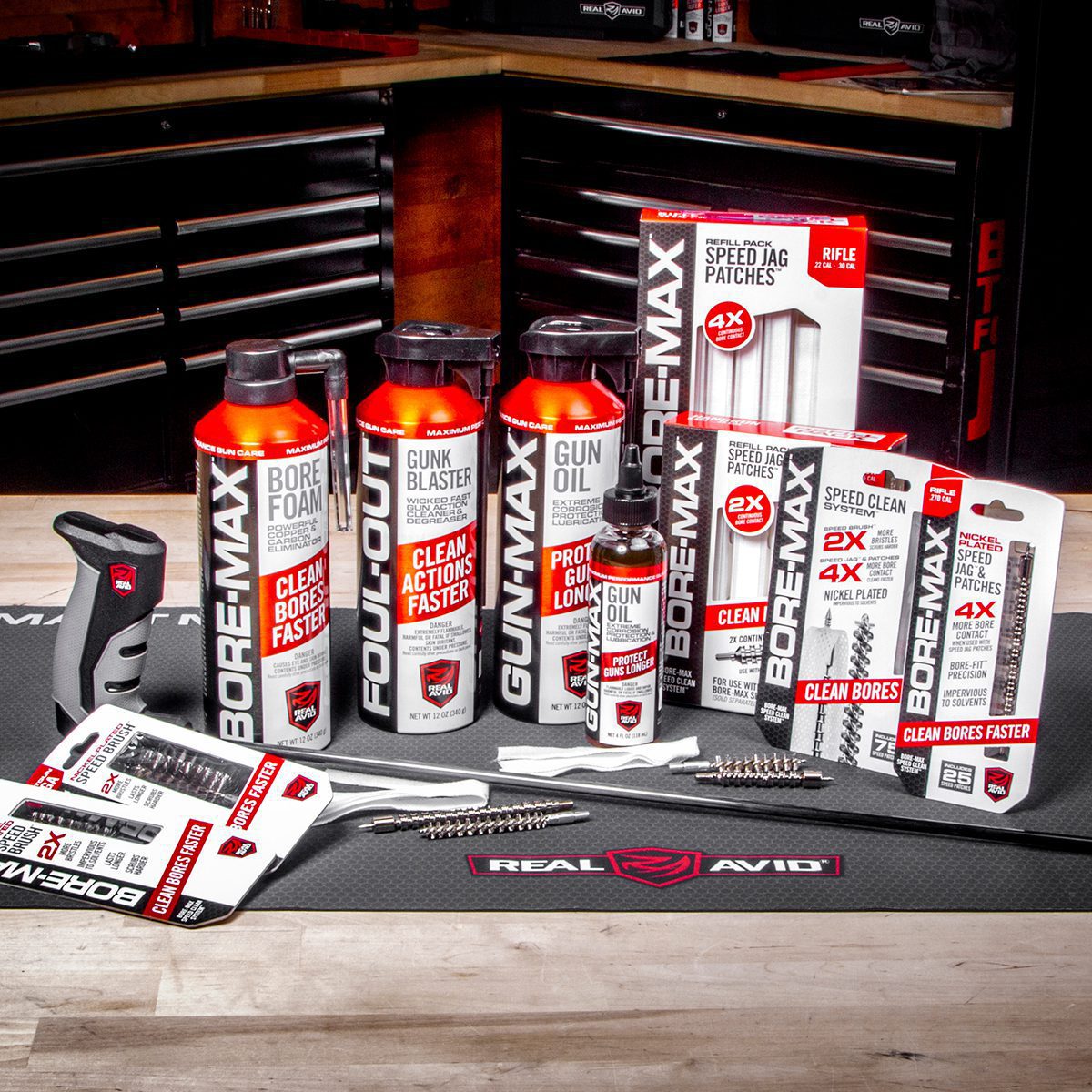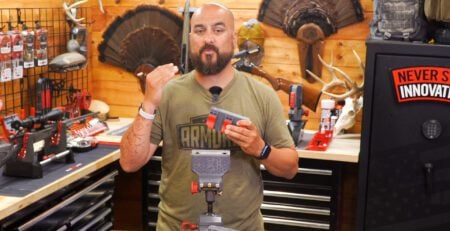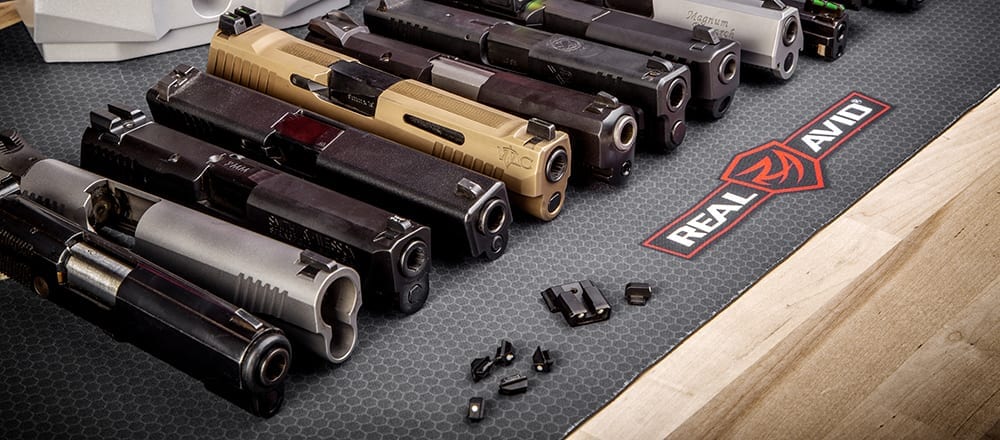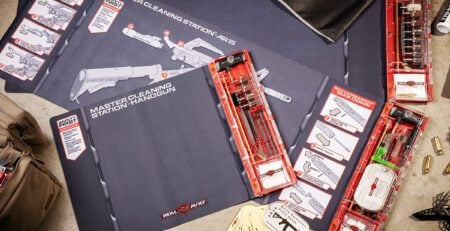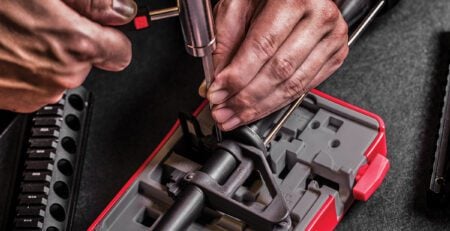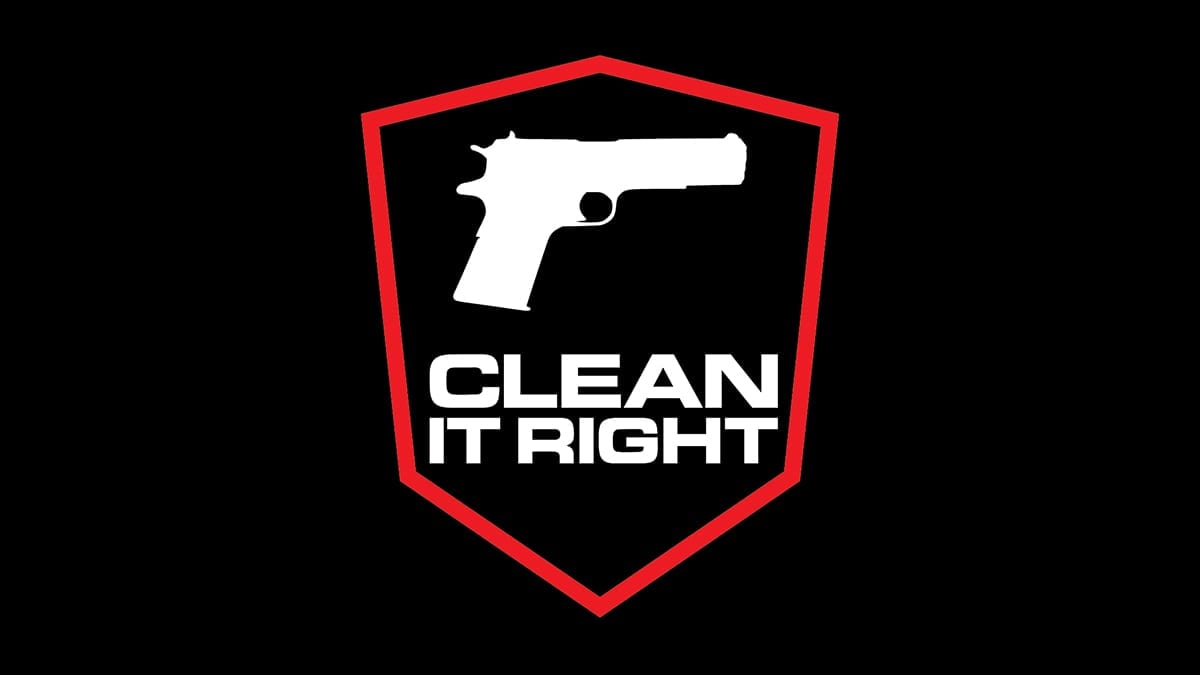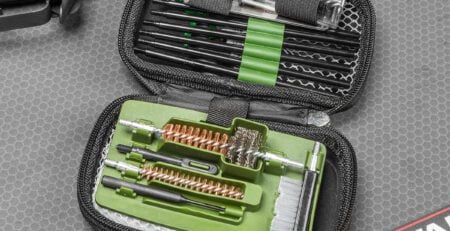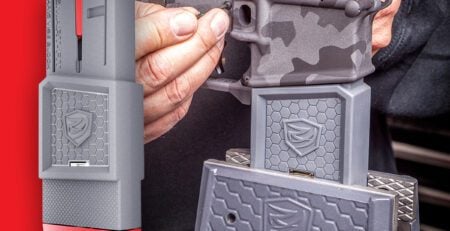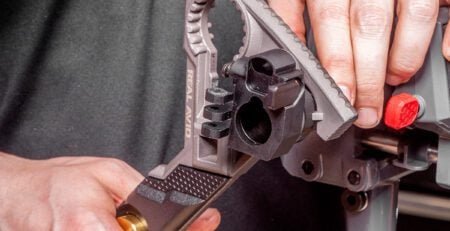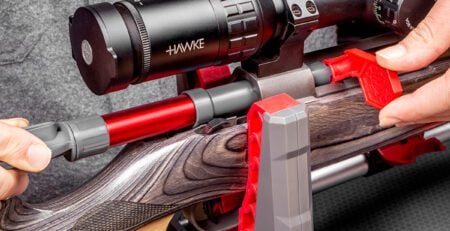CLEAN BORES FASTER!
If you continue doing what you’ve always done, you’ll continue to get the same results you’ve always gotten. When it comes to bore cleaning, that means repeating the same old tedious process using ineffective tools and laborious, redundant steps that take too long and make it a time-consuming chore. Stepping back and taking a holistic look at the process was step one in the development of the Speed Clean System. The goal being to get the job done faster, better and with less effort.
How it all started…
During the testing and development of Bore-Max™ Bore Foam, hundreds of guns were cleaned in order to test real-world effectiveness and performance of this new chemical introduction. As a result, there were some pretty sore arms and shoulders hobbling around the product development department at Real Avid. It didn’t take long before the wheels of innovation began to turn in order to find a way to complete each round of testing faster and easier. By taking a step back and understanding what they were really trying to accomplish and the relevancy of the tools they were using to complete each task some new insights emerged. After multiple iterations the team came up with some creative new designs that got the job done significantly faster than the traditional brushes, jags and patches they began testing with. They then asked themselves, who wouldn’t want to clean their guns faster and easier? Those resulting design innovations are now the Bore-Max Speed Clean System.

Bore Cleaning Defined – What is the job and why is it important?
First and foremost, we would have to agree that rifling is important. Since its modern development dating as far back as the 16th century, it is commonly accepted that barrel rifling, in all of its forms, twist rates and so on significantly improves the consistent accuracy of a firearm. Fouling build-up within the bore over time reduces the effectiveness of rifling, thus negatively affecting the accuracy and consistency of the gun. This build-up can also reduce the actual bore diameter, resulting in a tighter fit of the bullet thus increasing pressure within the bore and negatively affecting bullet velocity.
What is fouling?
Carbon
Carbon fouling is the result of burnt powder expelled from the shell casing each time the gun is fired. An everyday example of carbon build-up would be the glass stove-top on the oven in your kitchen. When you clean these deposits immediately, they are relatively easy to remove. If you leave them for later however, they are much more difficult to get rid of. Through the continual heating and cooling process, these deposits harden and become more dense requiring abrasives and significant elbow grease to remove. The same thing is happening within the bore of your gun. Carbon builds within the lands and grooves of the bore and continually hardens over time. Additionally, carbon left in the bore can cause pitting and surface degradation, especially with corrosive ammunition.
Copper
Most are familiar with bullet forensics or “matching the bullet to the gun” from crime drama’s on TV. Striations on the bullet can be used to identify the gun they were shot from. Those striations are the result of copper that has been scraped off into the rifling lands and grooves while the bullet passes through the bore. Just as the striations on the bullet are consistent, so are the areas within the bore rifling that are creating those marks, thereby depositing super-heated copper within the bore and robbing the gun of the accuracy rifling provides.
Carbon + Copper Fouling
Carbon and copper fouling are bad enough alone but put them together and they create a real challenge. Within the bore, carbon and copper fouling build-up in layers over time and cumulatively can have a significant impact on a firearms performance if left unchecked. The carbon build-up essentially insulates the copper fouling from the outside in. Carbon layers need to be removed mechanically with a bore brush in order to fully expose the copper layers beneath. Alternately, copper must be chemically dissolved in order to remove it from the bore, as a brush is ineffective at breaking loose these heat-melded deposits.
In summary – The primary purpose of cleaning a bore is to remove all of this residual fouling from the barrel rifling lands and grooves, maximizing the accuracy potential and performance of the gun.
Bore Brushes
Although it will soften, carbon fouling does not dissolve effectively in copper solvent. If the copper build-up in the barrel is completely coated with baked-on carbon, the solvent will never penetrate enough to do its job. A metal bristle bore brush is still the most effective way to physically remove carbon build-up in the bore and expose the copper for removal.
The shortcomings of traditional bore brushes according to Real Avid have been three things. The first being common phosphor bronze brushes break down and dissolve in bore solvent from the end of the bristle inward. This chemical reaction soon renders the brush useless, as the resulting dissolved, and thus shortened bristles no longer engage with the inside of the bore enough to offer any scrubbing effectiveness. Nylon bristles won’t dissolve in solvent but are inadequate at effectively removing carbon. Secondly, the bristle array density on traditional brushes is often so sparse that even remotely effective surface scrubbing is next to impossible and at best extremely time consuming. Lastly, dissolved bronze from the brush in the barrel will leave false-positive fouling indications when running the jag and patch through the bore. This leads you to believe you are removing significant copper build-up while in reality it is just the remains of your dissolved bore brush.
Jags and Patches
The jag and patch are meant to remove the loosened and dissolved fouling in the lands and grooves along with the spent solvent. One of the problems with traditional jag and square patch combinations is fitment. There seems to be a “close enough” mentality when it comes to sizing the jag diameters for specific bore sizes. Often times specifying a “one size fits many” range of bore sizes which inevitably will be too loose in some bores and too tight in others. Worse yet, it is often up to the user to find the correct combination of patch quantity, size, thickness and shape to successfully travel through the bore without getting seized up. To be most effective the jag and patch should have a consistent compression fit with the bore wall to effectively compress the patch into the lands and grooves to remove loosened and dissolved fouling. An improperly sized jag and patch combination will either get stuck in the bore or be too loose to get down into the rifling grooves.
Patch Size & Shape – Another issue is the limited size of the square patch. The bigger the patch, the more fouling and solvent can be removed with each pass through the bore. However, due to the tendency of square patches to “bunch” when passed through a bore, the patch size must be kept at a minimum in order to keep from getting stuck in the bore. This square patch in a round hole size limitation results in countless pass-throughs with fresh patches to clear the loosened and dissolved fouling along with soaking up the spent solvent.
Bore Surface Contact – Most traditional jags are designed with a leading edge, which is the thickest portion of the jag. When paired with a square patch it is intended to produce the compression fit within the bore, but then immediately tapers off to allow room in the bore for the bunched-up square patch. This design severely limits the actual compressed bore contact needed to thoroughly clean the rifling grooves and requires multiple passes with a fresh patch to get all the fouling out.
Introducing the Bore-Max Speed Clean System™
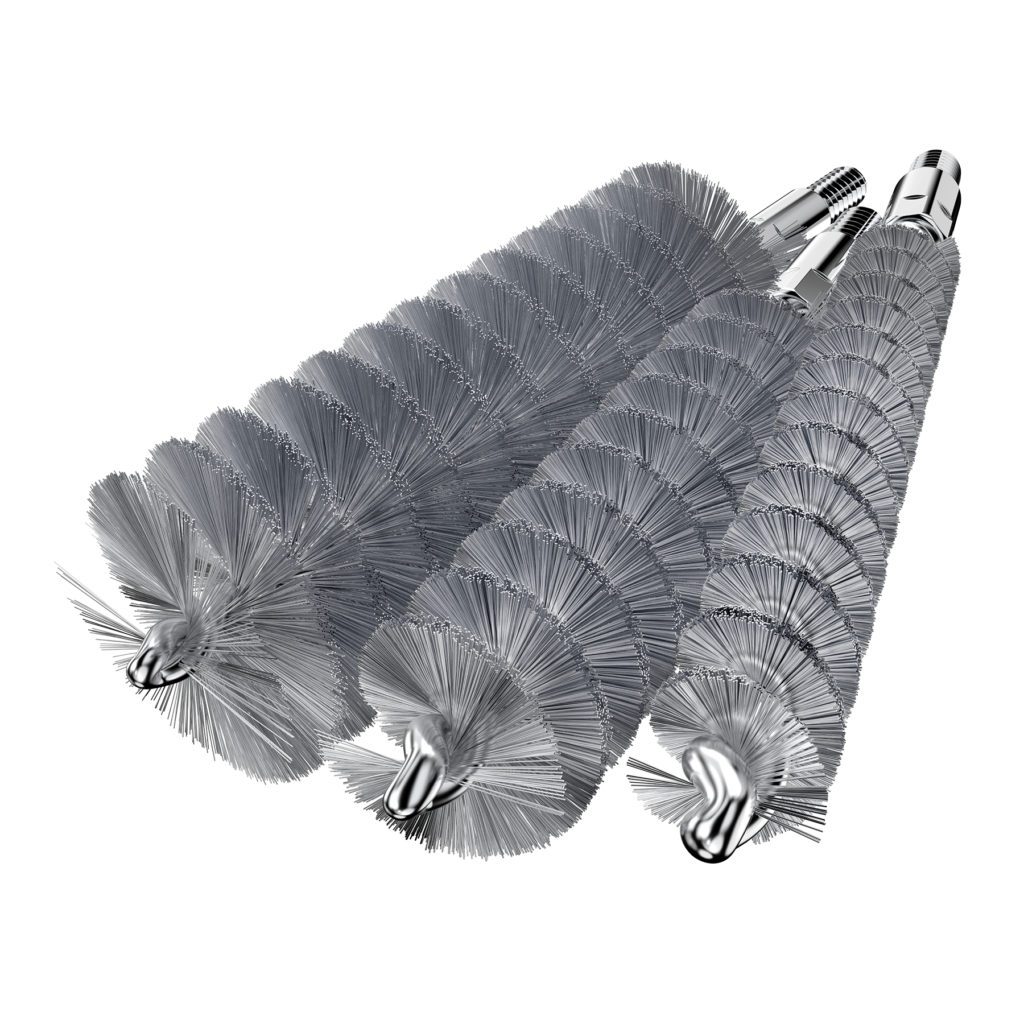
Bore-Max™ Speed Brushes™ – 2X More Crud Scrubbed
With twice the bristle density of standard brushes, Bore-Max Speed Brushes delivers over 2X the scrubbing power to the bore with each pass. The stiff and durable, nickel-plated phosphor bronze bristles eliminate chemical breakdown in the bore and extend the life of the brush.
“In order to achieve maximize effectiveness, we found there needed to be an optimal balance between bristle density and bristle flexibility. In our testing we recognized very quickly that having too few bristles was a waste of time and too many wouldn’t provide enough flexibility to navigate the lands and grooves of the bore,” commented Howard Tripp, Chief Innovation Officer. The bristle configuration of the Bore-Max Speed Brush is the result of finding that sweet spot, achieving maximum scrubbing density while retaining enough flexibility to effectively reach down into the lands and grooves, removing more carbon with each pass of the brush and getting maximum results faster.
In regard to nickel-plating, Tripp also commented, “phosphor bronze has shown to be an ideal bristle material, with the exception of reacting poorly to bore-solvent. Nickel Electroplating these brushes solved that problem and increased their useful longevity as well.”
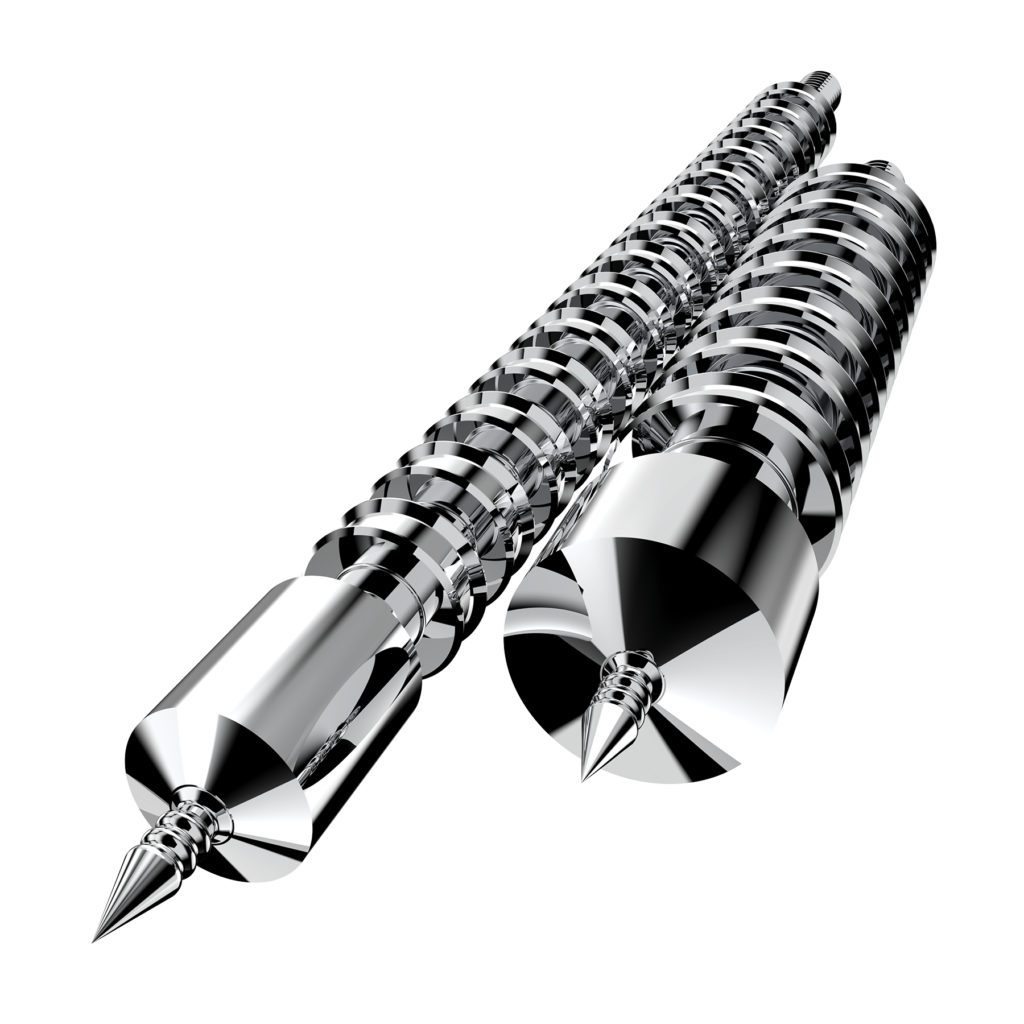
Bore-Max Speed Jags™ and Speed Jag Patches™ – Up to 4x more bore cleaning contact
By applying some new thinking to an old process, Real Avid has created a line of jags and patches developed in tandem to be paired for perfect, caliber specific bore fitment. Sized to account precisely for both the jag diameter and patch thickness this combo provides the optimal compression to thoroughly and consistently reach into the lands and grooves. “We wanted to create a jag and patch combo that would fit perfectly into the bore it was designed for. Tight enough to provide superior compression within the bore while still remaining relatively easy to push through,” stated Tripp.
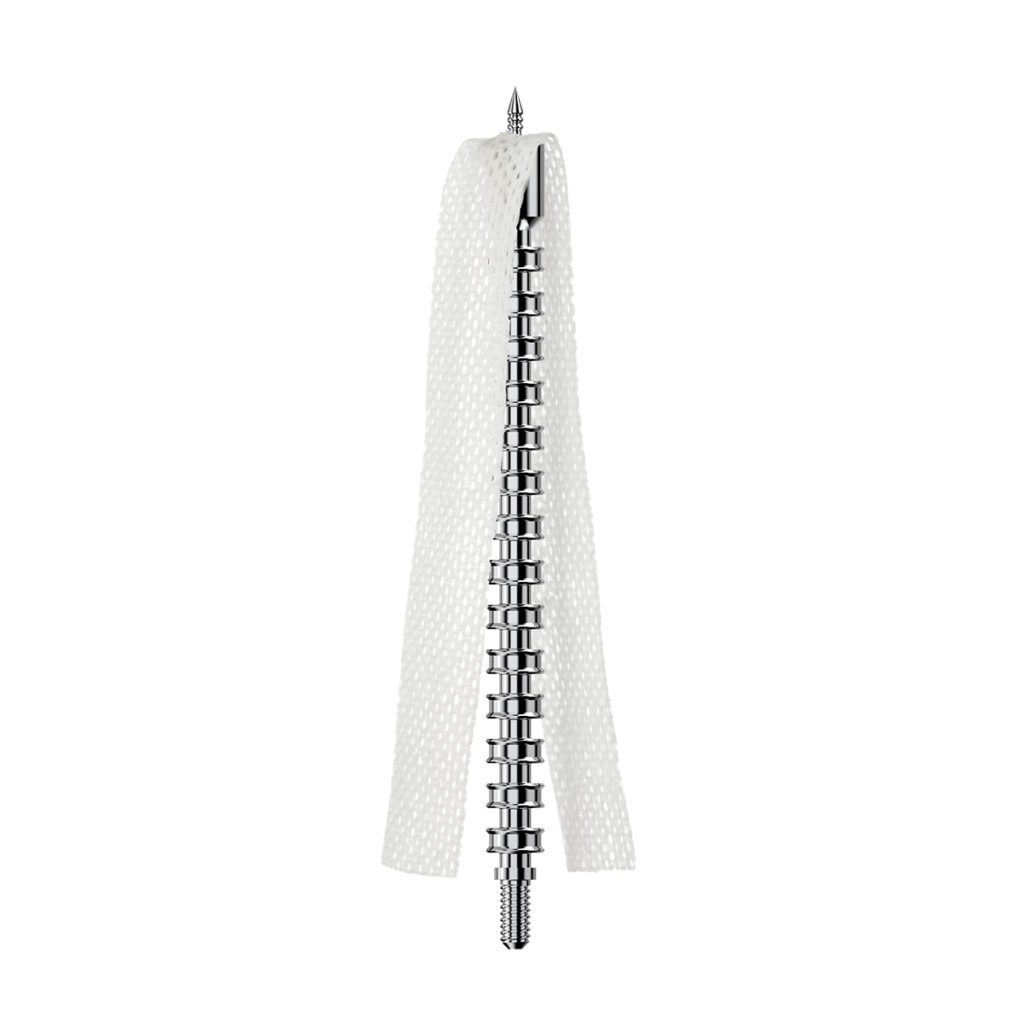
Patch Size & Shape – The challenge in creating the Speed Clean System was how to get more patch material in the bore, eliminate bunching and maximize the effectiveness of each pass-through. “We created countless patch shapes to test. The outcome we were searching for was to get maximum patch material through the bore in a single pass without bunching up and seizing in the bore,” Tripp recalled. As is often the case, the simplest answer is usually least obvious. “When we simplified our thinking to devise a minimalist patch shape that would cover the jag completely without any overlap or wasted material, we arrived at our answer. As an additional benefit, once the patch shape was solidified, we realized we were no longer limited to the length of jag required, since we no longer needed to accommodate for patch bunching within the bore.”
Patch material was also a big consideration in the development of the Speed Clean System. Cotton, commonly available and used traditionally for bore patches is a cost-effective material that is readily available. The issues Real Avid identified with using cotton as a patch material was the tendency of cotton patches to fray and drop lint in the bore and their lack of absorbency. “We elected to go with a synthetic material that that has shown superior absorbency over cotton,” Tripp said. “One of the main purposes of the patch is to absorb and clear the spent solvent left in the chamber, synthetic material simply outperforms cotton at this task.” The other benefit of using a synthetic material is the ability to create a quilt-like textured surface that is more effective at picking up and trapping crud as it passes through the bore without fraying or dropping lint.
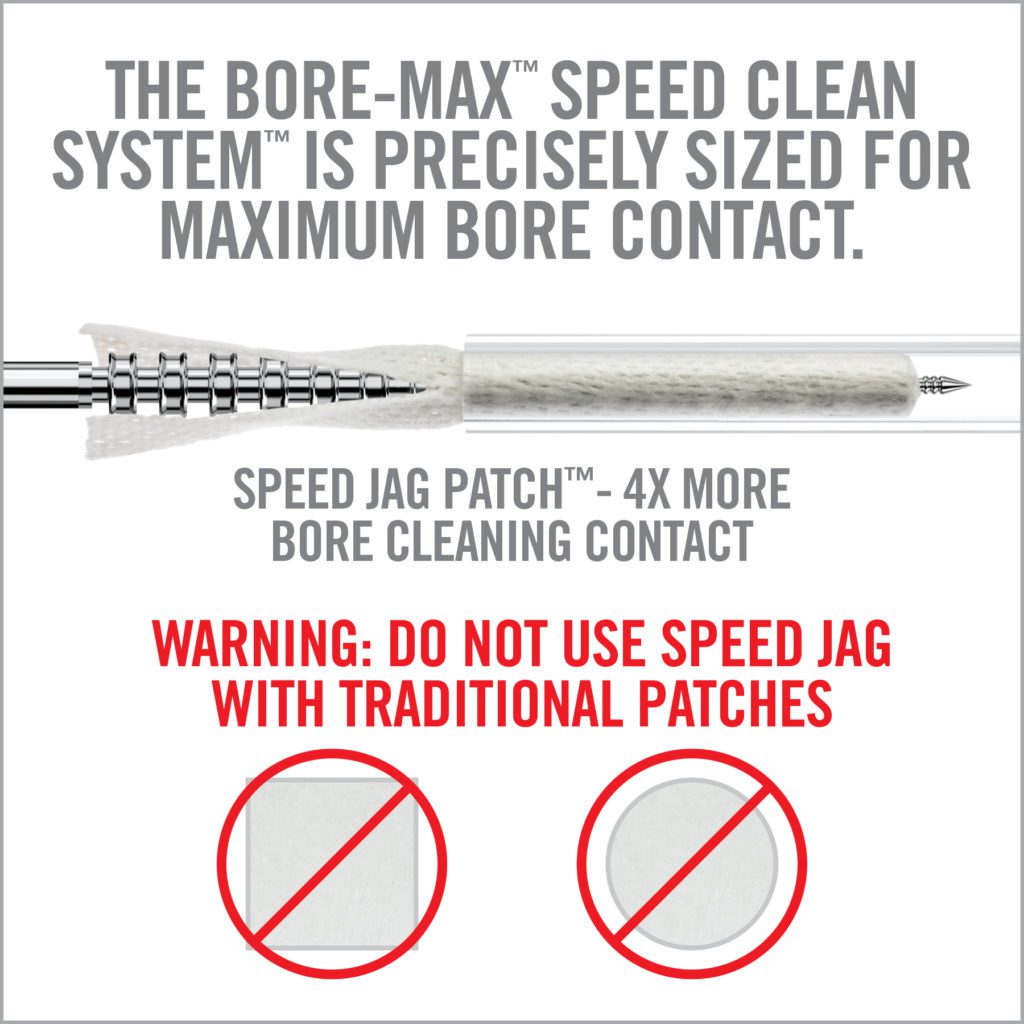
Bore Surface Contact – This is where two ideas converged. Traditional jags have a very limited leading edge which is where the real work is being done. The tapered trailing edge of these jags are just filler to accommodate for the mis-shaped patch to bunch-up behind it. “To get the job done faster we wanted to limit the amount of times it took to run through the bore in order to achieve the desired result, which in this case is a clear patch,” Tripp commented. “First, we elongated the jag and eliminated the taper found on traditional jags. We instead created multiple compression rings along the entire length of the jag. Since we shaped the patch to fit the jag precisely without any wasted overlapping material, we no longer needed to accommodate for the patch bunching, and could utilize the entire jag for the job it was created for.” With the Speed Jag and Speed Jag Patch you can get the same results as pushing 4 or more traditional square patches in only one pass through the bore. Think of it as running 4 or more traditional jag and square patch combinations through the bore at the same time.
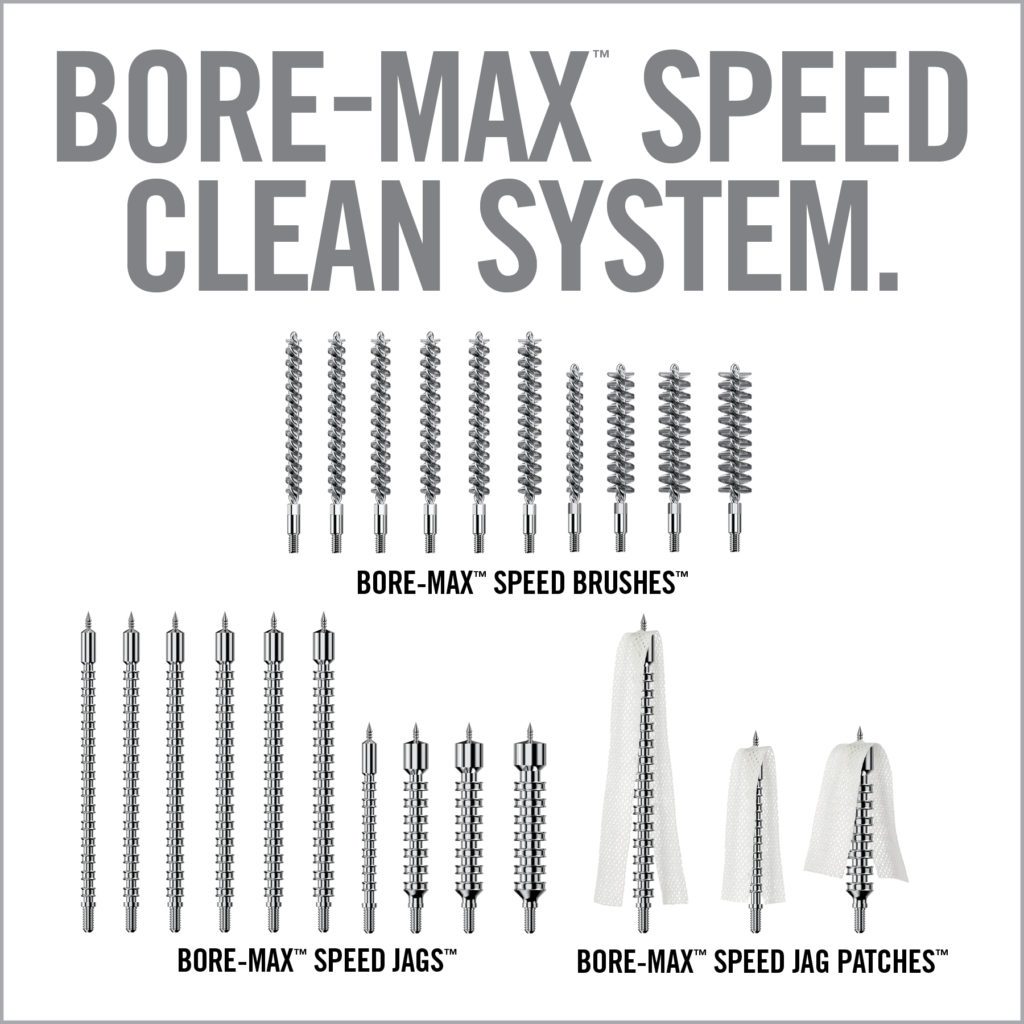
Real World Results – In testing using the Real Avid bore cleaning process outlined below, the Speed Clean System was compared to other popular brushes, jags and patches. The test was to take equally fouled law enforcement training rifles and completely remove all fouling from the bore. The only equivalent in the tests were the 15-minute foaming bore solvent soak, in which all rifles received Bore-Max™ Bore Foam in equal doses. First off, the dual-density Speed Brushes were noticeably more effective than traditional brushes, as significantly more copper was removed in each round of cleaning as evidenced by the black residue on the patches. Secondly, the Speed Jag and Patch combinations took on average 4 to 5 pass-throughs to achieve a clear bore, while the traditional jag and square patches took on average over 20 pass-throughs to achieve the same results. Those results indicate a significantly faster way to clean a bore with less effort.

